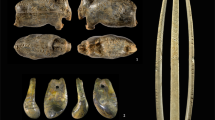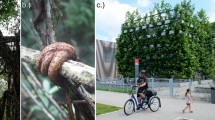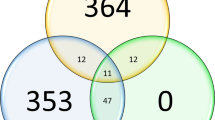Abstract
THE Saqqara graph, drawn on an ostrakon, has been described by Gunn1 and discussed by Clarke and Engelbach2. Jarrett Bell3 has suggested that ordinates of the dimensions written on the ostrakon can be obtained by drawing, in a quadrant of a circle of radius 9 cubits 1 finger (253 fingers), a line parallel to the base and 155 fingers from it, and on this line erecting ordinates spaced 40 fingers apart. (The length of this base line is thus 200 fingers.) His results are tabulated thus:
This is a preview of subscription content, access via your institution
Access options
Subscribe to this journal
Receive 51 print issues and online access
$199.00 per year
only $3.90 per issue
Buy this article
- Purchase on Springer Link
- Instant access to full article PDF
Prices may be subject to local taxes which are calculated during checkout
Similar content being viewed by others
References
Annales du Service des Antiquités de l'Égypte, 26, 197–202 (Cairo, 1926).
"Ancient Masonry", 52–53 (London, 1930).
Ancient Egypt, 103 (Sept./Dec., 1933.
"Egyptian Art", 156.
Author information
Authors and Affiliations
Rights and permissions
About this article
Cite this article
WILLIAMSON, R. The Saqqara Graph: its Geometrical and Architectural Significance. Nature 150, 460–461 (1942). https://doi.org/10.1038/150460a0
Issue Date:
DOI: https://doi.org/10.1038/150460a0
Comments
By submitting a comment you agree to abide by our Terms and Community Guidelines. If you find something abusive or that does not comply with our terms or guidelines please flag it as inappropriate.



